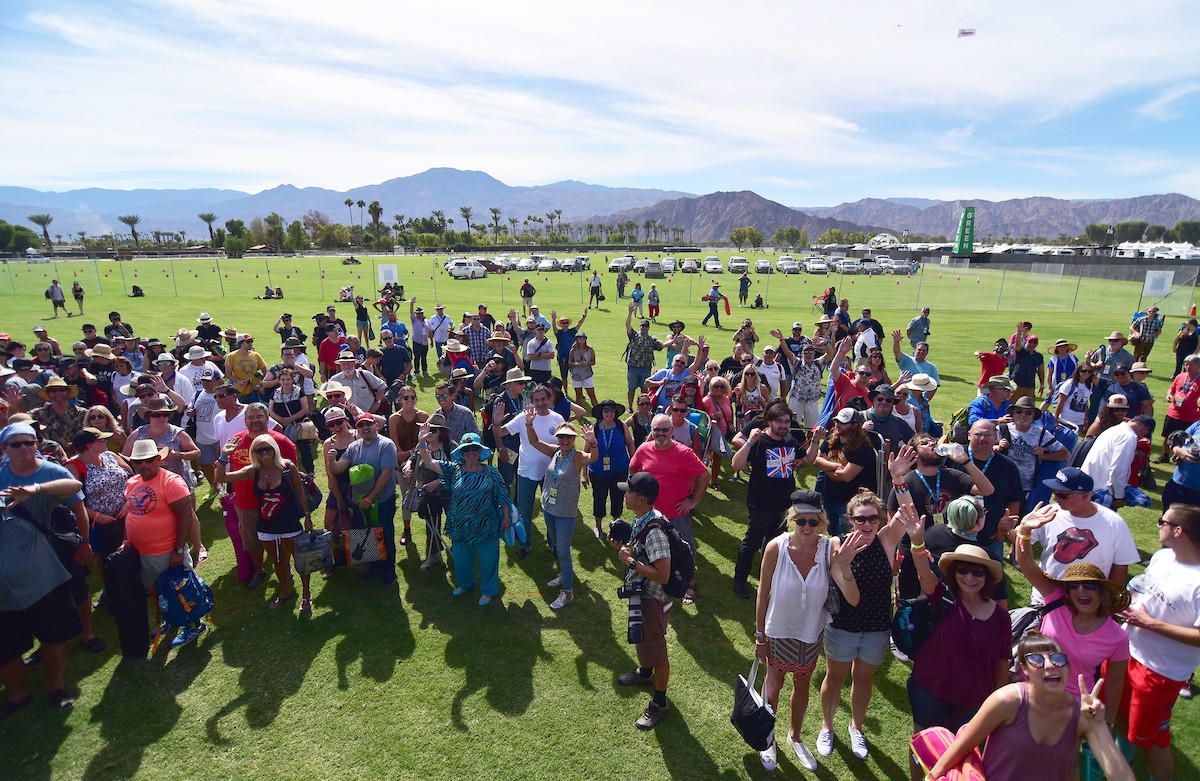 Though they’ve spent the past 50 years pretending to be mortal enemies, religion and rock-n-roll actually have a lot of similarities. The singer on the stage, the priest at the altar, the revelers in their seats on Saturday night, the penitents in their pews on Sunday morning, the promise of eternal life, the immortal songs that live on forever. During the Desert Trip festival last weekend, if you turned off the sound for just one second during the Rolling Stones encore performance of “You Can’t Always Get What You Want” with a black robed choir in the background, it might look like something you’d watch on TBN at 11 a.m. (complete with the scraggly, deacon of distortion known as Keith Richards).
Though they’ve spent the past 50 years pretending to be mortal enemies, religion and rock-n-roll actually have a lot of similarities. The singer on the stage, the priest at the altar, the revelers in their seats on Saturday night, the penitents in their pews on Sunday morning, the promise of eternal life, the immortal songs that live on forever. During the Desert Trip festival last weekend, if you turned off the sound for just one second during the Rolling Stones encore performance of “You Can’t Always Get What You Want” with a black robed choir in the background, it might look like something you’d watch on TBN at 11 a.m. (complete with the scraggly, deacon of distortion known as Keith Richards).
Similarly, there was a lot of talk about gods at Desert Trip. From the second it was announced earlier this year, fans of all generations were consumed by the opportunity for one last chance to worship the deities of classic rock—Bob Dylan, The Rolling Stones, Neil Young, Paul McCartney and Roger Waters. It was an attempt to relive nostalgia of days gone by, when the foundation of rock was dangerous and Earth-shaking before it was ever considered classic. Critics and Baby Boomers too sentimental over the music for their own good took turns gushing about the majesty of these performers, spearheaded by the Cute Beatle himself, Sir Paul McCartney, before they even hit the stage in Indio.
For me though, as a Millennial, the Desert Trip lineup didn’t really carry that weight. Maybe because my particular job covering new and interesting bands for the Weekly usually forces me far outside that classic rock bubble. However, it's mostly because it’s just not the music of my generation, which came of age after the arrival of everything from Gangsta rap to Coachella in 1999, and long after the standards of popular music splintered off into a million different directions. Despite going to hundreds of concerts, I had never seen (nor really went out of my way to see) any of the Desert Trip artists perform. So I came to witness what the 50 year fuss was all about. And if nothing else, I could put myself in the shoes of someone who could appreciate this music for what it meant to them when it first came into the world.
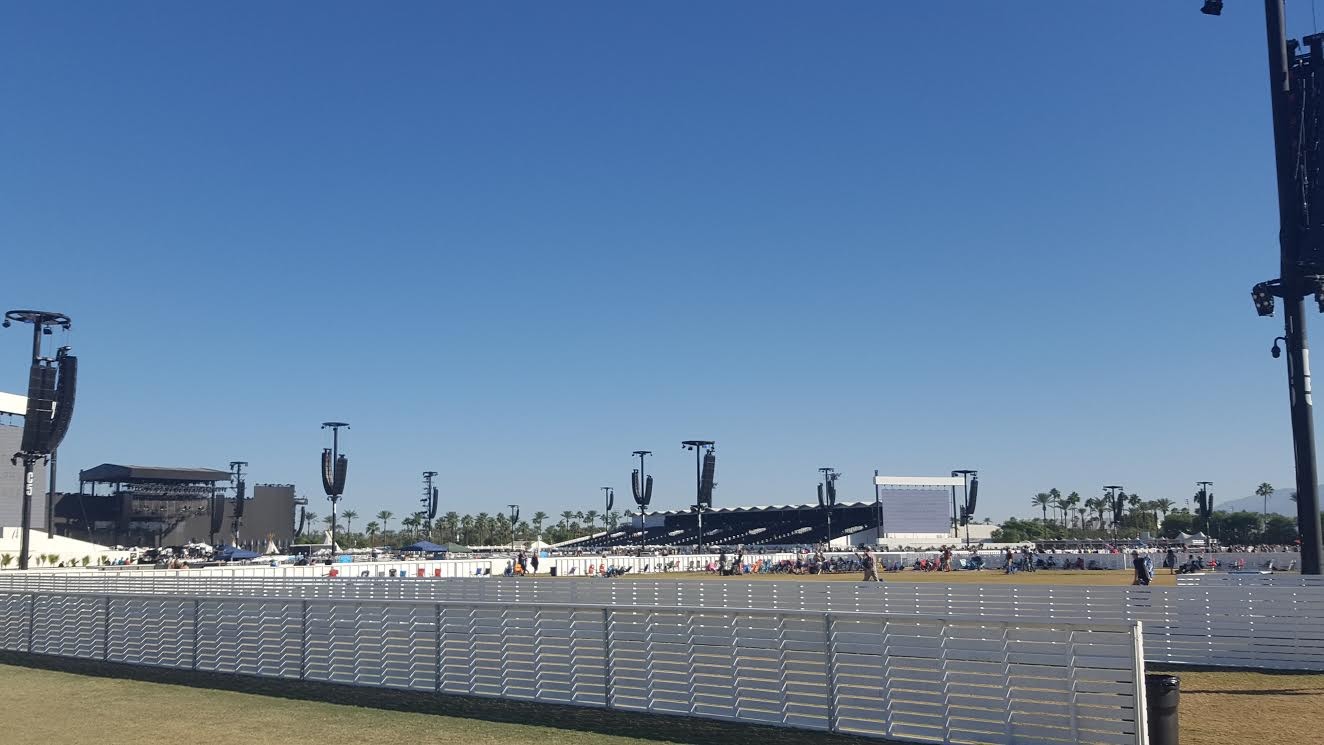 Looking out into the crowd, the faithful ticket buyers who packed the Empire Polo Grounds in Indio were content to take their seat priced anywhere between $200-$1,599 a pop (plus travel expenses) and show their love for the gods by rolling in the isles, stomping their feet or just sitting calmly while nodding their heads and giving lip service to the lyrics that defined their youth. Unlike the spirit of Woodstock and the Summer of Love that the festival desperately aimed to recapture, the vibe outside the stage felt more like a boring church service than a concert, and not even close to a free love hippie festival. You could barely even light up a joint in your seat without people giving your dirty looks. Each section of the the polo field, normally wide open for Coachella, was sectioned off by white stable fences, like a horse coral for people.
Looking out into the crowd, the faithful ticket buyers who packed the Empire Polo Grounds in Indio were content to take their seat priced anywhere between $200-$1,599 a pop (plus travel expenses) and show their love for the gods by rolling in the isles, stomping their feet or just sitting calmly while nodding their heads and giving lip service to the lyrics that defined their youth. Unlike the spirit of Woodstock and the Summer of Love that the festival desperately aimed to recapture, the vibe outside the stage felt more like a boring church service than a concert, and not even close to a free love hippie festival. You could barely even light up a joint in your seat without people giving your dirty looks. Each section of the the polo field, normally wide open for Coachella, was sectioned off by white stable fences, like a horse coral for people.
The design of the festival’s impressive and pristine grand stands topped by luxury cabanas initially had me looking up in the sky to status and wealth instead of the the, multi-colored behemoth-style art that Coachella is known for. The grandstands were the only thing to really look at besides the ferris wheel and the oversized album covers planted around the edges of the grounds. The visual aspect of what draws me to festivals was largely absent until the bands took the stage.
If the idea was to transport us into the Church of Rock-n-Roll, then Bob Dylan's croaking apathy turned Friday's service into a funeral with lawn chairs. Staring out from the grandstand at the dimly lit stage, I didn’t feel like I was absorbing the wisdom of a recent Nobel prize winner. The fact that I could only understand every 15th word he said made that impossible as he rambled his way through nearly the exact same set list as Weekend 1 with passion that was about as dead as the grass on the polo field.
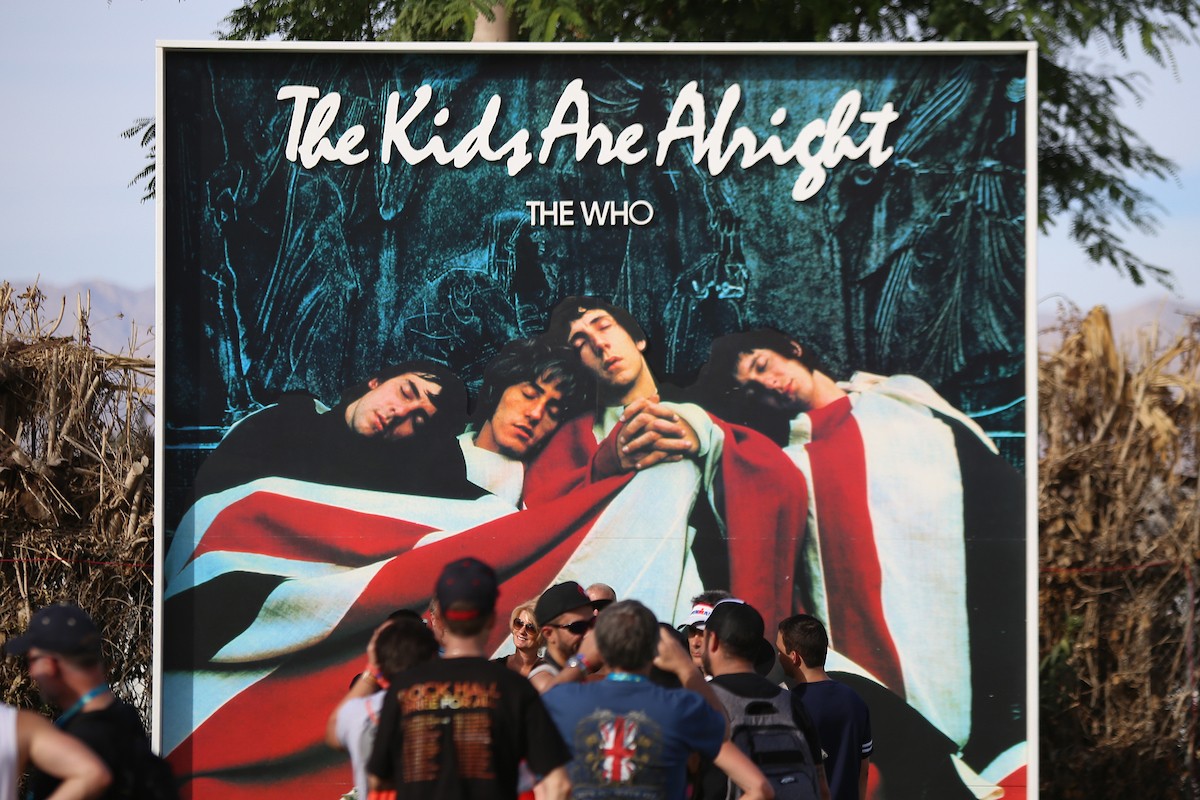 I remember thinking: Is this the destiny for the musicians who write the music that changes the world? A living wake for a body that barely feels like he's attending?
I remember thinking: Is this the destiny for the musicians who write the music that changes the world? A living wake for a body that barely feels like he's attending?
Though the new spirit of music for Millennials is already a decade in the making, most of us in this generation can agree that doesn’t (and shouldn't) need to be exactly like it’s grandfather was. Even if it’s a spirit we adore like the Rolling Stones, whose set was definitely alive and limber, despite the setlist being encased in amber right down to the explosively predictable ending of “(I Can't Get No) Satisfaction.” Like rocks, the Stones' music remains unchanged, which has always been what we love about them I guess.
In the middle of the Stones' set, my phone died, which seemed like the universe’s way of telling me to put my Millennial tendencies aside for the sake actually remembering history. I experienced the electricity of watching Mick Jagger sashay across the stage in a pink jacket with zero desire to take a selfie, shoot a video, or take to Snapchat to relay the wonders I'd seen. Being able to describe the performance to people who ask me years from now in actual words is another color to add to the palette of what makes me human—something a smartphone could never capture. In that moment, I started to understand why these people had come. Even from 400 yards away, this would've been a great performance to watch.
Mick Jagger’s joking characterization of the event as the “Catch ‘Em Before They Croak Tour” during his performance would be funny if it weren’t so true. Grandparents came for a chance to see their musical idols one last time while they can still travel, and parents wanted to share the magic of these performers with their kids. The common factor for the latter two generations is an aching need to recapture nostalgia that was never theirs to begin with. Considering the fact that the average age of the Desert Trip concert goer was 51, that would mean most of the young Boomers in attendance weren’t old enough to buy the records of these artists in their prime much less see them live.
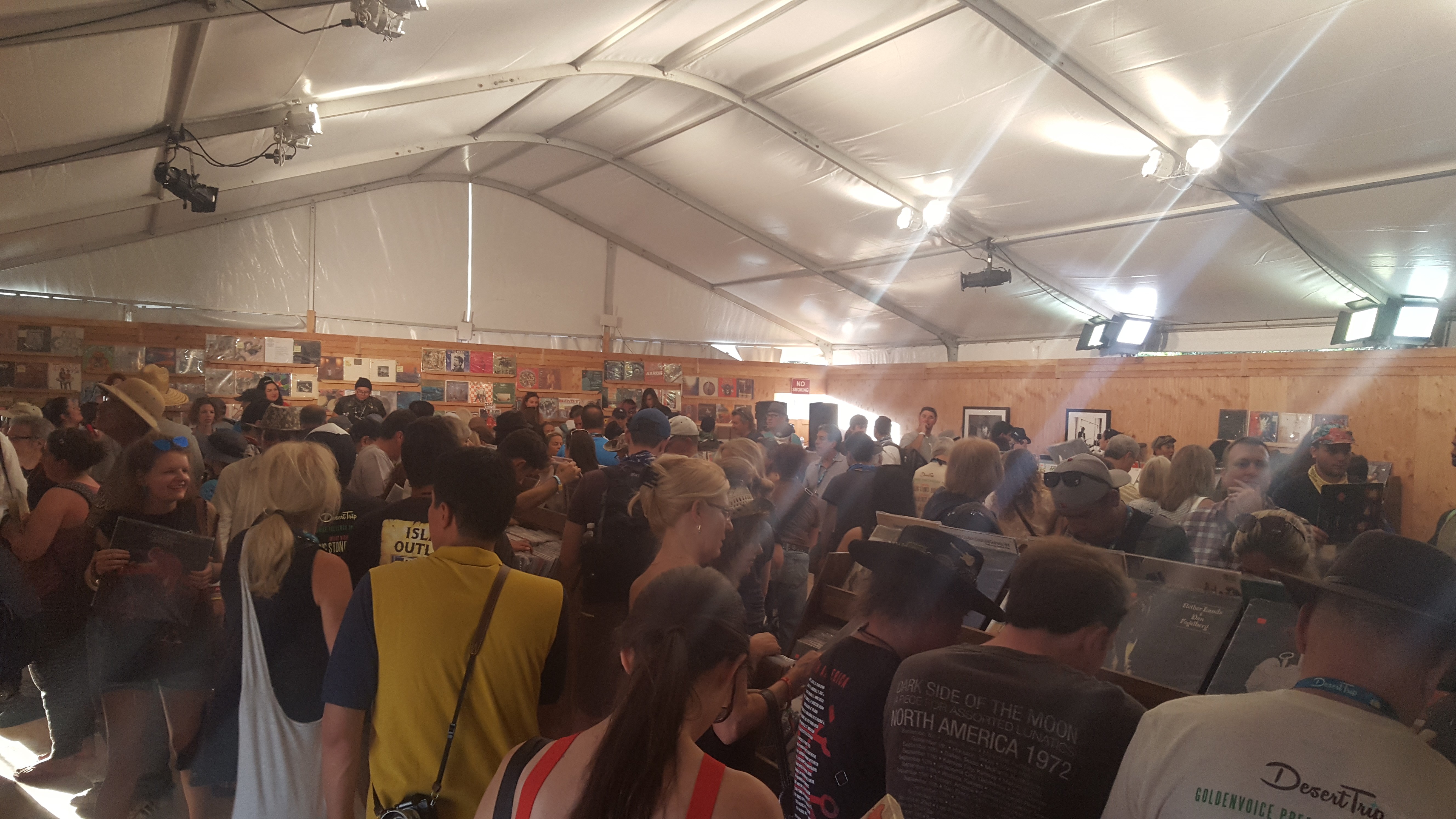 The borrowed nostalgia factor seeped into other facets of the festival, from the conversations that swirled around the food vendors to the packed photo gallery of classic band photos, to the record store where people crammed in to buy records of the artists performing. Perhaps someone in the store was in the mood for splurging on a $3,000 ultra rare Bob Dylan demo recording that the store actually did have stashed in the back. While most were just happy to pick through the records in a room with air-conditioning, others came to buy in bulk. I was told by a volunteer clerk at the record store that one guy who came in during Weekend 2 spent a total of about $4,000 on wax. Where the hell he was going to keep it all for three days, I have no idea. When the clerk asked why he was buying so many albums, the guy simply replied “I have a really nice record player.” Words can't even describe what a bummer of a response that is.
The borrowed nostalgia factor seeped into other facets of the festival, from the conversations that swirled around the food vendors to the packed photo gallery of classic band photos, to the record store where people crammed in to buy records of the artists performing. Perhaps someone in the store was in the mood for splurging on a $3,000 ultra rare Bob Dylan demo recording that the store actually did have stashed in the back. While most were just happy to pick through the records in a room with air-conditioning, others came to buy in bulk. I was told by a volunteer clerk at the record store that one guy who came in during Weekend 2 spent a total of about $4,000 on wax. Where the hell he was going to keep it all for three days, I have no idea. When the clerk asked why he was buying so many albums, the guy simply replied “I have a really nice record player.” Words can't even describe what a bummer of a response that is.
There’s a tendency for the world to bag on Millennials for underpaying (or not paying at all) for our music these days. But in the scope of what some Baby Boomers forked over in a single weekend to capture a slice of rock history and make them feel young again, I think over paying is an even more heinous offense.
All this begs the question: Will Millennials be a generation that relies on music of our old idols to keep us young and will the musicians of our time be able to create something that lasts beyond their popularity on Spotify?
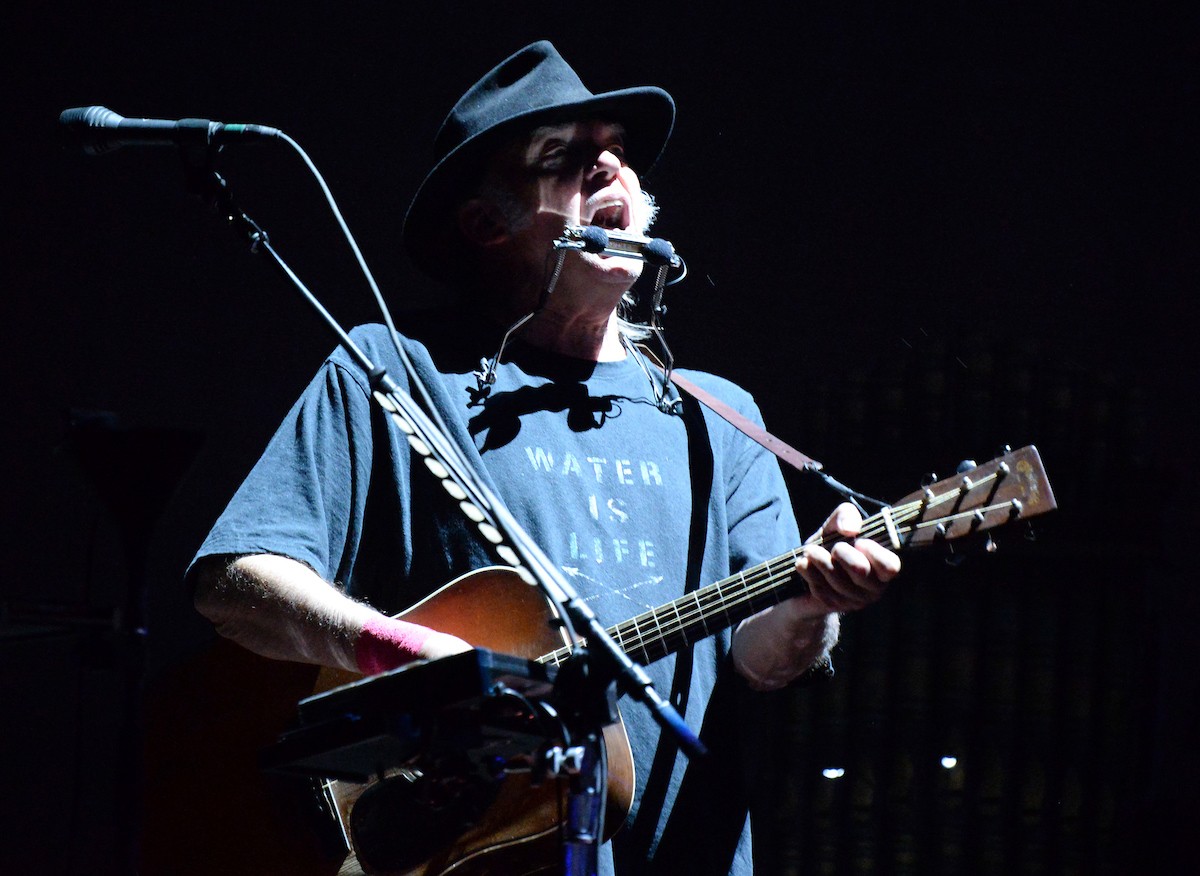 The one act that gave me hope of this possibility was the one I never expected—Neil Fucking Young.
The one act that gave me hope of this possibility was the one I never expected—Neil Fucking Young.
In scope of the colossal artists presented before us, Young was one old person I was willing to skip prior to seeing him at Desert Trip. Not that the Godfather of Grunge and the guitar wizard behind Crosby, Stills, Nash and Young didn’t deserve his place on the bill. But I was simply just less familiar with his material compared to the others and I didn’t expect it to connect with me. How wrong I was.
As the mountains of the desert turned purple and gold in the fading sun, Young stepped out a stage adorned with teepees and a band whose members averaged about 40 years his junior. Opening with a salvo of his harmonica-driven folk hits, his passion and his message of peace and social justice settled over the crowd awash in a dusky haze of pot smoke and reverent nostalgia. But the point wasn’t to anesthetize or satiate them, it was to wake them up and let something outside the confines of this plush, manufactured oasis reach in and touch them, which is exactly what he did.
The set, which ran long, felt more present and alive than even some of the better Coachella sets I’ve seen (I've been going to that festival every year for a decade). He gave his band, The Promise of the Real, the space and the respect to deliver a great show—not just as token young sidemen, but as actual participants in the music. They helped breathe life into every inch of his show, namely the guitar solo insanity of “Cowgirl in the Sand,” which totally blew me away. For two hours, Young and his band combined youth and wisdom in a way that made the massive desert Church of Rock-n-Roll feel smaller and more intimate. Even the moon, wrapped in an angelic rainbow sheen, felt was closer to the stage. I didn’t even fault the cameras for flashing it on the monitors during “Harvest Moon” about a dozen times. After all, it was a glorious goddamn moon.
Several times, Young shook people out of their auto-pilot appreciation with off-the-cuff set list selections and solos that ripped the time-space continuum and a message at the end of his set that connected with what’s going on in the world today. It's something Dylan, the grand Nobel Prize winner, could and should have done but—of course—didn't. When he started throwing bags of organic hemp seeds into the crowd, he wasn't just chucking out party favors, he was throwing out bags of curiosity about California seed law that landed far beyond the rich people in the front row. Seriously, how many who attended Desert Trip really knew anything about “seed justice” before he brought it to your attention? Back at my hotel on Saturday after the show, Bill AB-2470 was the first thing I Googled.
Young proved to me that 30 years from now, a Desert Trip for my generation is still possible regardless of the age of the artist—as long they, like seeds, are able to grow and change in new soil.
Given that criteria, it's interesting to think about who would be on the bill for a Millennial Desert Trip, at least in theory—especially because of how different it would look. For starters, there's no way in hell rock-n-roll would be the predominant sound on stage. Maybe Jack White or the Black Keys or Tame Impala are big enough to make the cut for this uber-mega fest, but I doubt they'd be the kings of the show. Just throwing out names of the top selling artists of our time like Beyonce,Kanye West, Taylor Swift, Drake and Rihanna (who made McCartney look and sound old when she joined him on stage for “Four Five Seconds”) come to mind if you look at the top tour earners today who encapsulate Millennial music. And they look nothing like the parade of white, English males at Desert Trip. Adel is about as close as you get—white, English, but definitely not male.
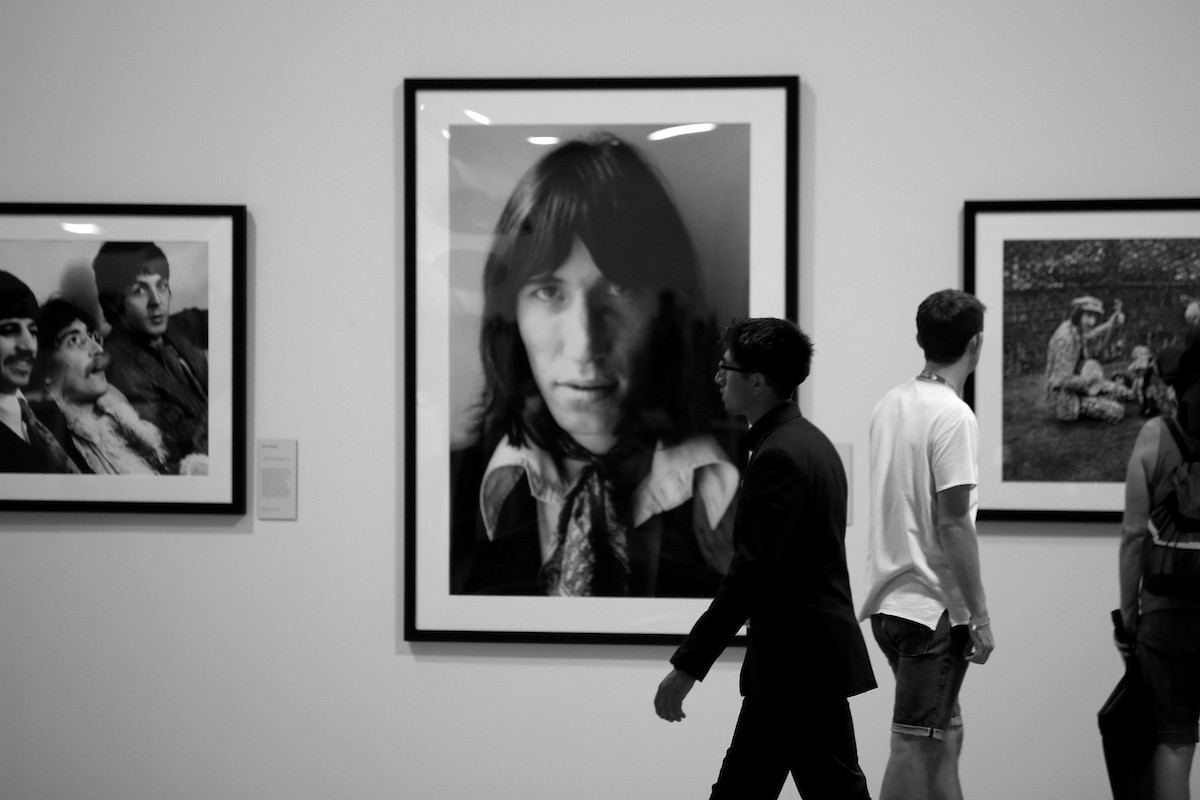 As plenty of research shows, the acts that do survive the next 30 years will be rewarded by generation that keeps its artists on the charts, spends more time and money on music and values the concert/festival experience better than any generation in history. It's a reality that flies in the face of most dumbass stereotypes that we're all ADD-afflicted amateurs who aren’t interested in paying for music. If there’s one thing I know from reporting and being of this generation, it’s that we’re always going to want to have live music in our lives and we’re willing to hold on to our top artists once we’ve anointed them. But there's no way I could see myself paying thousands of dollars for the show I saw from the grandstands of Desert Trip, in a segregated seating section with no vibe, no culture or interactivity aside from the people assigned to sit next to me all weekend. God help you if you didn't get along with your neighbor. That’s just not how most Millennials experience festivals, and I’m willing to bet that’s not how most people who actually went to Woodstock experienced festivals either.
As plenty of research shows, the acts that do survive the next 30 years will be rewarded by generation that keeps its artists on the charts, spends more time and money on music and values the concert/festival experience better than any generation in history. It's a reality that flies in the face of most dumbass stereotypes that we're all ADD-afflicted amateurs who aren’t interested in paying for music. If there’s one thing I know from reporting and being of this generation, it’s that we’re always going to want to have live music in our lives and we’re willing to hold on to our top artists once we’ve anointed them. But there's no way I could see myself paying thousands of dollars for the show I saw from the grandstands of Desert Trip, in a segregated seating section with no vibe, no culture or interactivity aside from the people assigned to sit next to me all weekend. God help you if you didn't get along with your neighbor. That’s just not how most Millennials experience festivals, and I’m willing to bet that’s not how most people who actually went to Woodstock experienced festivals either.
Could Millennials have enough amazing music muster up their own Desert Trip one day? The ones who actually listen to the sounds of this era already know that we do. And the statistics and the strength of Millennial purchasing power says we definitely can. But should we? In my opinion I don’t think we should. And I hope it's not necessary by the time we're old enough for AARP. While we are just as prone to worshipping our rock stars as the previous generation, maybe even more so, interacting with them on social media, watching them evolve in real time and taking advantage of our right to choose who we want to see and how we want to see them takes precedence over a one-size-fits-all experience. Maybe my perception is skewed. Maybe I haven't lived enough. Maybe when I'm 65, my desire to go to one more dope rap show before I die will force me out to the desert to sit back in a rocking chair and watch a gray-haired Yeezy spit lyrics like “Let’s go on a living spree, they say the best things in life are free” from two football fields away while sitting in an $800 seat. But God, I hope not.
I'd rather see live music while I'm capable of seeing it like I'm still living—in an open field where one fixed ticket price for general admission means I can see multiple shows from where ever the fuck I want as long as I'm wiling to scrap or at least politely shuffle up to the front to see them. And I want to walk away with the knowledge of something I didn't know or haven't heard a thousand times before. Because much like an act of true faith, enjoying a festival means embracing a chance and reveling in the unknown. It shouldn’t feel like a last gas, it should feel like a spark that lights our eternal flame.

